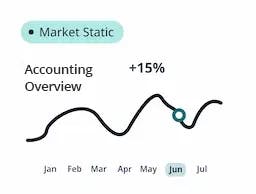
Admin
2024-11-09

Effective management of seasonal inventory in warehouses is crucial for smooth logistics operations. The main goal? Ensuring the company can fulfill orders during peak seasons.
In today's e-commerce landscape, product seasonality and SKU - Stock Keeping Unit variety are common in logistics facilities. Digitalizing stock control is an effective way to handle demand spikes and adapt to seasonal changes.
In this article let us see in detail about:
- Seasonal Inventory - An Overview
- Key Performance Indicators (KPIs) for Seasonal Inventory
- Seasonal Inventory Management Strategies With Software
Seasonal Inventory - An Overview
Seasonal inventory refers to stock that sells faster during specific times of the year. This inventory type is characterized by seasonal demand. Warehouses should use flexible supply-chain procurement to adjust product quantities and locations based on the season.
Contact us?
To manage seasonal inventory efficiently, retailers should consider:
Identify high-demand and low-demand periods, their length, and sequence. Understanding product demand is crucial for good stock control.
Seasonal inventory management should include product procurement policies. Regular analysis of item demand helps create procurement strategies that enhance logistics operations.
Using these factors, retailers can identify SKU turnover and implement logistics strategies to boost warehouse efficiency. Take for instance, you can use techniques for warehousing like advanced storage and flexible slotting to ensure high-turnover products are easily accessible to operators.
Key Performance Indicators (KPIs) for Seasonal Inventory
To manage seasonal inventory effectively, it's essential to track specific supply chain KPIs. These help visualize the status of each SKU and product demand.
Here are some KPIs retailers use to control inventory during peak seasons:
Shows how often stock is replenished over a certain period.
Indicates the percentage of incomplete orders compared to total orders received.
Shows how long an item remains in storage before being sold.
Notes the number of orders that can't be filled when customers place them.
These are common KPIs, but each retailer should analyze the most relevant ones for their warehouse based on business type and facility needs.
Seasonal Inventory Management Strategies With Software
To control seasonal inventory effectively, retailers should implement a comprehensive strategy. Here are 8 key steps for managing seasonal inventory:
- Identify Seasonal Items
Analyze your entire product assortment to determine which items need additional quantities during peak seasons. This involves studying historical sales data, market trends, and customer behavior.
Look beyond obvious seasonal products; sometimes, seemingly unrelated items may experience increased demand during certain periods. For example, cleaning supplies might see a surge during holiday seasons.
- Forecast Demand for New SKUs
For new products without historical data, use data from similar products or product categories to predict demand. Utilize advanced forecasting tools that can analyze patterns in comparable items. Consider factors like market trends, upcoming promotions, and economic indicators that might influence demand for these new items.
- Synchronize Promotional Plans
Align your promotional activities with seasonal demand surges to avoid conflicts and optimize inventory. Create a promotional calendar that takes into account seasonal peaks, ensuring that your marketing efforts complement rather than compete with natural demand increases.
This synchronization helps prevent stock outs during high-demand periods and reduces the risk of excess inventory after promotions end.
- Plan Storage Locations
Decide whether to store seasonal inventory in distribution centers, central warehouses, or stores based on your supply chain structure. Consider factors like storage capacity, transportation costs, and lead times.
For retailers with limited store space, utilizing central warehouses and increasing delivery frequency during peak seasons might be more efficient. Proper planning ensures that products are available where and when they're needed most.
- Prioritize Replenishment
Create a delivery queue for seasonal inventory based on priority and category. Start with items that have the longest lead times or are most critical to your seasonal strategy. Develop a phased approach to bringing in seasonal inventory, allowing for adjustments based on early sales trends. This prioritization helps manage cash flow and prevents overwhelming your storage facilities all at once.
- Determine Order Dates
Calculate specific order dates for timely deliveries from various suppliers. Take into account lead times, production schedules, and shipping methods. Build in buffer time for potential delays, especially for international shipments. Use inventory management software to automate these calculations and send timely reminders for placing orders.
- Maintain Regular Orders
While focusing on seasonal inventory, don't neglect your regular stock. Continue placing orders for year-round items to maintain overall stock balance. Use automated reordering systems to ensure these regular items don't fall through the cracks during busy seasonal periods. This dual focus helps maintain customer satisfaction across all product categories.
- Identify Surge End Dates
Determine when to stop ordering increased quantities of seasonal inventory to avoid excess stock after the peak season. Monitor sales trends closely and be prepared to adjust these dates based on real-time data.
Develop a plan for handling any potential overstock, such as clearance sales or product returns to suppliers. This forward-thinking approach helps minimize losses from unsold seasonal inventory.
Implementing these strategies requires careful planning and execution. Many retailers find that using specialized software can greatly facilitate this process.
Just-in-time is another effective method for facilities with high seasonal inventory. This strategy involves receiving raw materials or products only when orders are placed, ensuring the exact quantity of goods at the right time to meet demand.
Another efficient strategy is on-demand warehousing, which involves outsourcing operations like goods receipt, storage, and order processing to a logistics service provider for a specific period.
Software for Controlling Seasonal Inventory
Managing seasonal inventory without software and manually can lead to human made errors and incomplete orders. This will affect the warehouse productivity leading to disruptions in business operations reducing efficiency. This is why using software to manage seasonal inventory is important as it can eliminate these risks. Inventory management software distributes goods in storage locations according to preset criteria and rules. Advanced software ensures real-time product traceability and comprehensive control over goods and orders received.
The most advanced programs also have solutions that monitor changes in product turnover and demand peaks at particular times of the year. Some inventory management software is offered in the SaaS (software as a service) model, allowing retailers to increase or reduce licenses based on workloads.
Advanced inventory management system may include functionality to enhance seasonal inventory management, such as warehouse slotting. This feature determines the proper position for all your inventory by regularly analyzing product demand. After examining turnover, the program suggests redistributing storage locations to facilitate order picking.
Conclusion
The importance of inventory management software for small businesseshas been made well aware for every business person. Efficient inventory control is crucial for optimal stock levels and meeting customer demands. By implementing the right inventory management software, retailers can better handle seasonal fluctuations and improve efficiency.
Whether it's Cloud inventory management software, AI-powered, or specialized for small businesses, there are inventory management solutions available to suit various needs and sizes.
Latest News
From Our blog and Event fanpage




